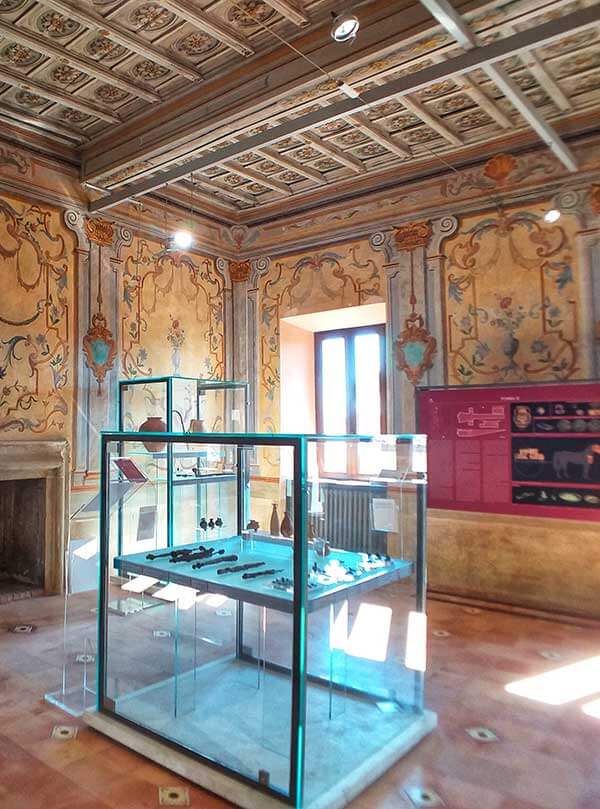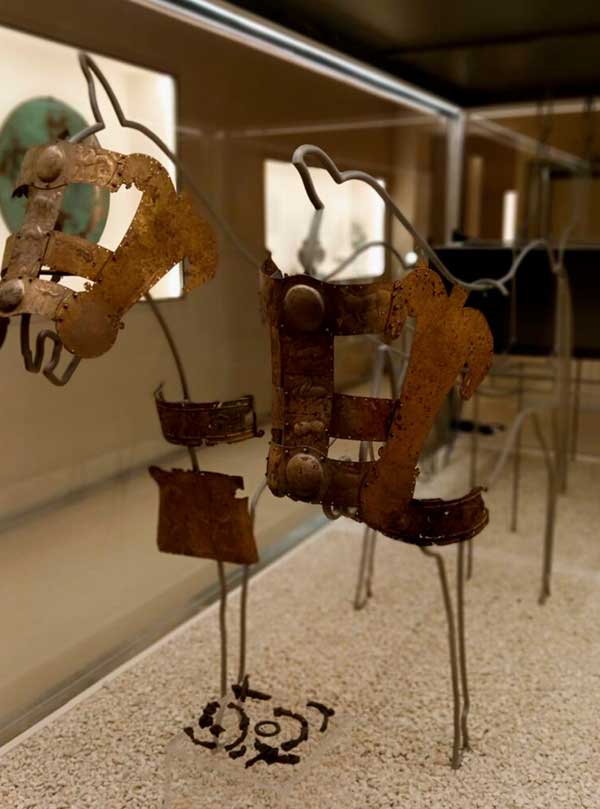The Civic Archaeological Museum of Fara in Sabina (MUSAF) opened its doors in 2001 inside the striking Palazzo Brancaleoni, a Renaissance building located in the Piazza del Duomo in the heart of Fara Sabina’s historic center.
The Civic Archaeological Museum of Fara in Sabina

Position
P.zza del Duomo, 3
02032 Fara in Sabina (RI)

Opening hours
From Thursday to Sunday
hours: 10 a.m., 11:30 a.m., 2 p.m., 3:30 p.m., 5 p.m.
The Civic Archaeological Museum of Fara in Sabina (MUSAF) opened its doors in 2001 inside the striking Palazzo Brancaleoni, a Renaissance building located in Piazza del Duomo, in the heart of Fara Sabina’s historic center.
The history of the Brancaleoni family has its roots in 1257, with the nobleman Andrea Brancaleonis de Romania. This family of powerful feudal lords, originally allied with the Holy See and the Guelph faction, obtained numerous privileges thanks to Cardinal Leo and became owners of vast estates in the Sabina and the area of the district of Rome called Romania between the 12th and 14th centuries. Prominent among their residences are Ginestra and Monteleone Sabino, the latter of which became the main residence of the family over the centuries.
In 1265, during the King of Sicily Charles of Anjou’s attempt to halt Manfred’s offensive against Rome, Andrea Brancaleoni and his brother Oddone were appointed vicars and captains of justice in Abruzzo, thus demonstrating their loyalty to the crown.
The present building, a fascinating example of Renaissance architecture, is the result of the union of several tower houses dating back to the mid-13th century, although it is unclear to which specific branch of the Brancaleoni family it belonged. The original 15th-century facade has been preserved intact, while the interior has been heavily renovated by later owners. In the interior, one of the rooms has frescoes in the late Baroque style, decorated with grotesque motifs typical of aristocratic residences of the late 18th century.
The Civic Archaeological Museum of Fara in Sabina, has opened its doors to the tomb chariot of Tomb XI of the Necropolis of Colle del Forno and its most famous find:the Chariot of the Prince of Eretum. After a year of renovation and fitting out of the museum spaces of Palazzo Brancaleoni. The recovery, restoration, fruition and enhancement of the precious find were made possible by the synergistic work of the Municipality of Fara in Sabina and the Soprintendenza Archeologia,Belle Arti e Paesaggio for the metropolitan area of Rome and the province of Rieti. The effort to deliver this ancient treasure to the community is intimately linked to the events of its “return” to its homeland, which make the belonging of these precious goods to its territory even more significant. In fact, traces had been lost of much of the Chariot of Eretum’s trousseau, looted and illicitly exported, until the Italian authorities identified this heritage within the collections of the Ny Carlsberg Glyptotek in Copenhagen and, after years of negotiations, thanks to the intervention of the Carabinieri’s TPC Command, obtained back what each of us will be able to admire. In fact, everyone has the opportunity to get to know the reperators of the museum hall up close.
The guided tours are scheduled Thursday through Sunday. Instead, Monday through Wednesday, they can be conducted by appointment.










